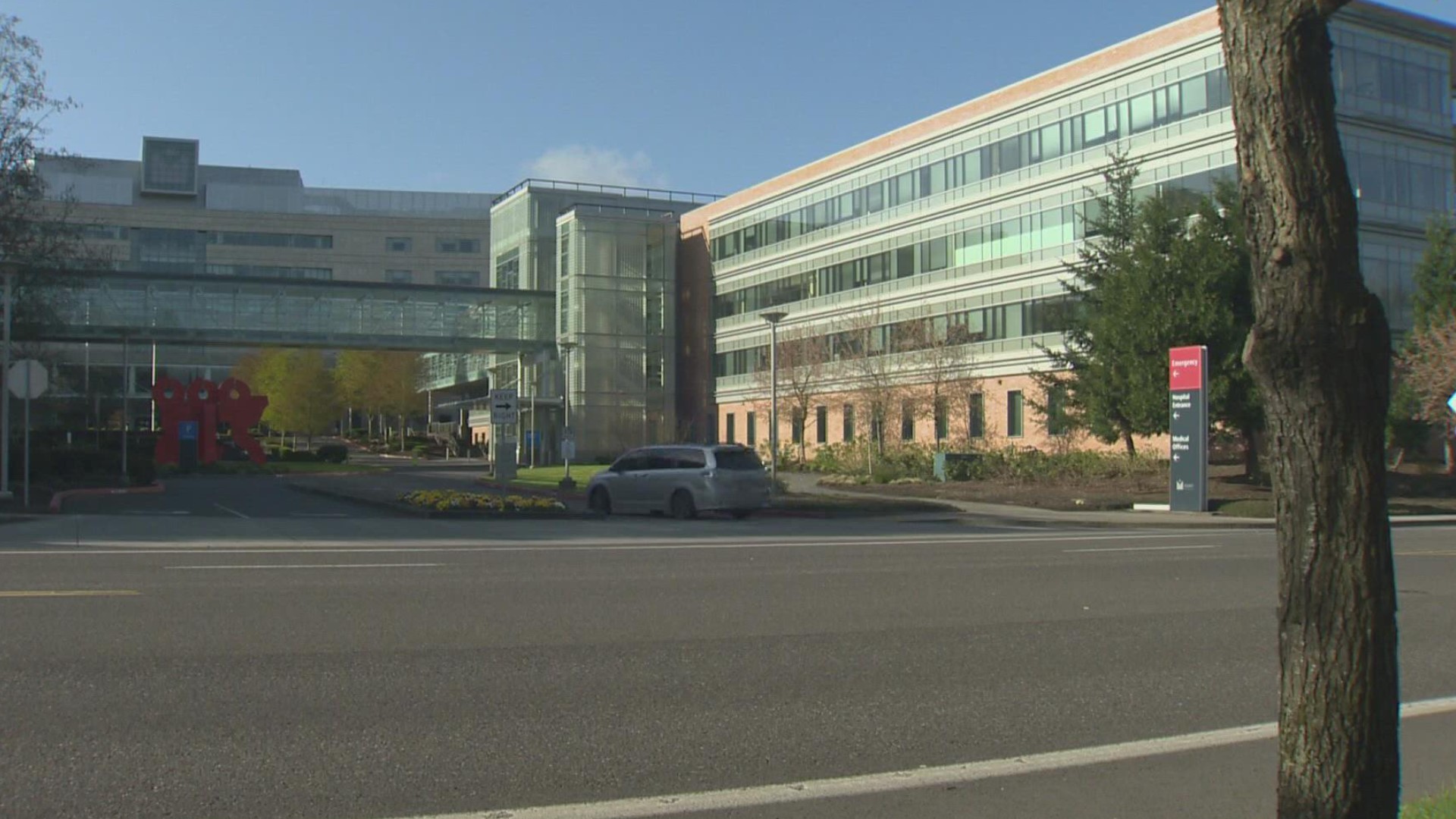VANCOUVER, Wash. — Hospitals in Clark County, Wash. are facing what may be their biggest coronavirus challenge yet in terms of the number of patients needing treatment.
“They are under strain for many different reasons and a COVID-19 surge is unfortunately going to make all that worse,” Clark County Deputy Health Officer Dr. Steven Krager said on Friday.
This past week, nearly 97% of regular hospital beds and 98.4% of intensive care unit beds in the county were occupied. COVID patients made up for about 18% of regular hospital beds and 25% of the ICU beds.
Legacy Salmon Creek Medical Center in Vancouver is once again adjusting to meet the public's needs.
“Health care is a dynamic resource that we stretch to fit the need, so we get creative ... we have tents set up to add additional capacity, and that's the way we work in the ER and the hospital as a whole,” said Legacy Health’s head of emergency services Dr. Dan Bissell.
The case numbers show the surge is not over.
RELATED: Inslee pauses non-urgent medical procedures, deploys National Guard to Washington hospitals
With an additional 6,121 cases reported in the past week, cases per 100,000 residents is up to a record 1,679, more than double the 715 cases per 100,000 reported last week. There have additional 14 deaths reported.
The omicron variant may not make the majority of people who get it critically ill, but spreading it to those who are immunocompromised or unvaccinated is the biggest danger. So what can you do?
Health officials said to get tested is possible, but that people should avoid the ER for the purpose of getting tested in order to save room for people with severe symptoms or other medical emergencies.
"But we also want to emphasize that we are here and want to see anybody, anytime for what their needs are,” said Bissell.
“We do know overall that that omicron is less likely to send someone to the hospital," Dr. Krager added. "But people are still going, people are still getting sick enough to go and that creates problems for everyone.”
Krager said he hopes people will stay home if they test positive or have symptoms and wear a mask around others once finished quarantining.
RELATED: Here are the schools in Oregon and SW Washington moving to distance learning or closing temporarily
Although some models show the surge could be close to peaking, it's not there yet in most places, including Clark County.
“From our data right now, we have seen a slowing that might suggest a crest; it doesn't mean it's not going to come in the next few days. It's possible. But right now, it's too early to say. I hope that it happened and the sooner we get on the downside of this surge, the better,” said Krager.
For more information, follow Clark County Public Health on Facebook.

